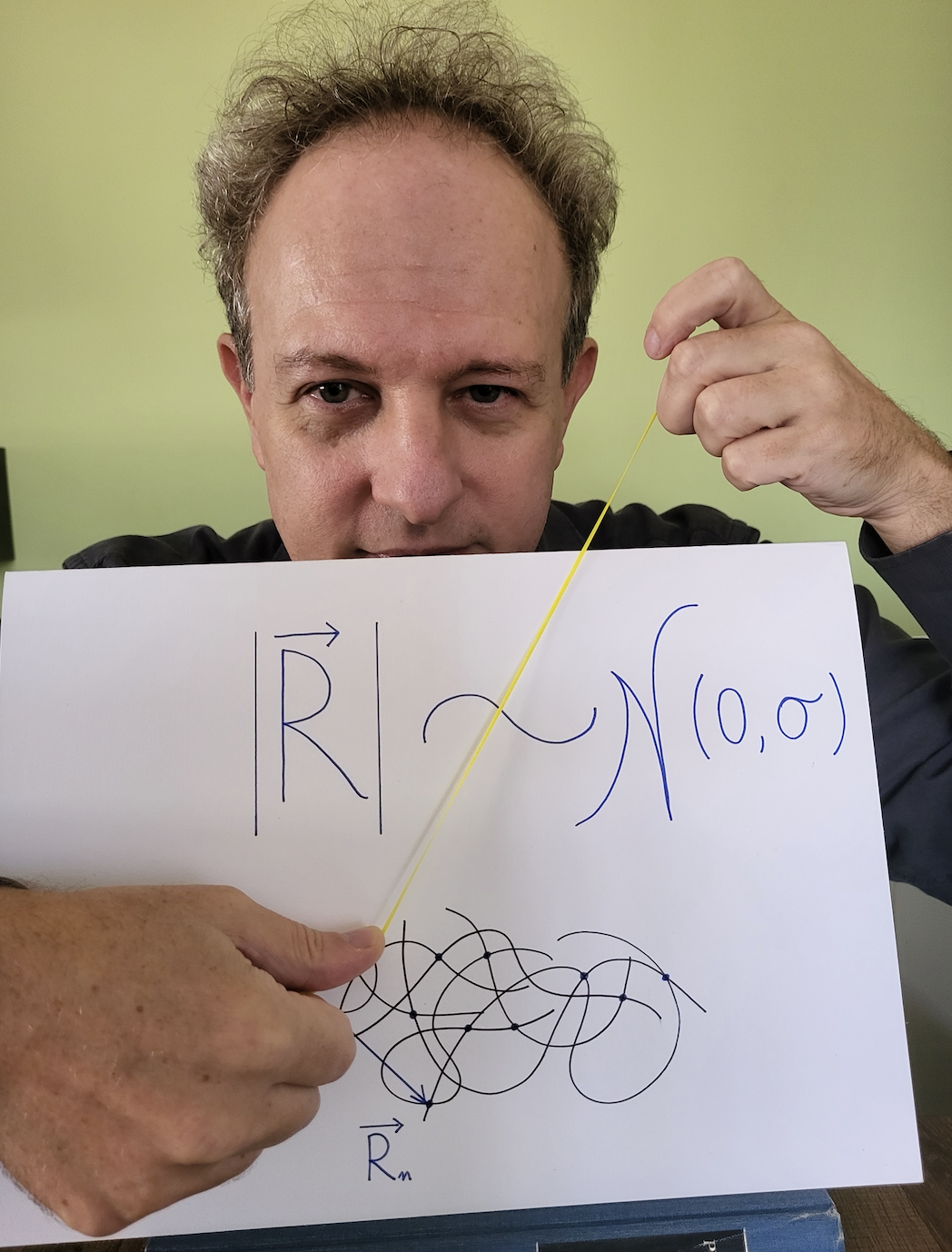His research paper, written in collaboration with Mario Grassi, Michela Abrami and Gabriele Grassi of the Trieste University, presents a statistical mechanics theory of rubber-like elasticity in swollen and unswollen polymer networks characterized by explicitly non-Gaussian distribution functions (Laplace’s, Cauchy’s, and continuous Poisson’s in the exponential limit). An important outcome is the derivation of new families of statistical and mechanical laws, including a discussion of energy functions of strain invariants which are reasonably simple for a model comparison with available data on polymer networks. Accordingly, an experimental-statistical approach based on LF-NMR was devised to identify the most likely end-to-end length distribution in an arbitrary network. When this strategy is applied to agar 1 %, alginate 1 %, and scleroglucan 2 % hydrogels, it turns out that the end-to-end distribution should be never regarded as Gaussian even if, as in agar and scleroglucan systems, the normal statistics is the best among those here regarded. Remarkably, Poisson’s distribution is proved instead to be the most realistic for the alginate hydrogel.
Potential for future studies and optimization of gel-polymers and soft materials
– The potential importance of this work lies not only in opening new theoretical prospects in the science of macromolecules, but also in the immediacy and simplicity of its quantitative use for studying, designing and optimizing gel-polymers, and soft materials. Their use is ubiquitous in science and technology, and can, from the mechanical-rheological point of view, mimic the tissues of living beings better than any other material, says Stefano A. Mezzasalma, theorist on Soft Matter Chemical Physics. He is currently a member of the Optics and Optical Thin Films Laboratory at the Materials Physics Division of the Ruđer Bošković Institute.
Since the properties of gels play a fundamental role in many modern controlled-release pharmaceutical systems, for example drug delivery, and, in biotechnology, as substrates for cell growth in two and three dimensions, organoids, the results are an indispensable step towards the realisation of artificial tissues and organs.
– My and my colleagues’ hope is that this work may also be helpful in remarkable medicine applications, for example to greatly improve the analysis and characterization of the sputum of patients suffering from cystic fibrosis and chronic obstructive pulmonary disease, allowing scientists to get detailed information on the diseases’ nanostructure so as to better guide medical therapy.
LINXS community can aid in developing the research
Stefano A. Mezzasalma highlights that the LINXS community can aid in the further development of the research on polymer networks.
– For me it is important to maintain close contact with LINXS. Within the community there are great skills in affinal topics. I am thinking, for example, of the theme IPDD. In particular, transport and release phenomena of bio-active molecules are well framed within the theme 'Dynamics' which is now closed. Further, at MAX IV, the SoftiMAX beamline can be used profitably at the border of life sciences and materials science to gain important new information, he concludes.
Download the article: Rubber elasticity of polymer networks in explicitly non-Gaussian states. Statistical mechanics and LF-NMR inquiry in hydrogel systems





















